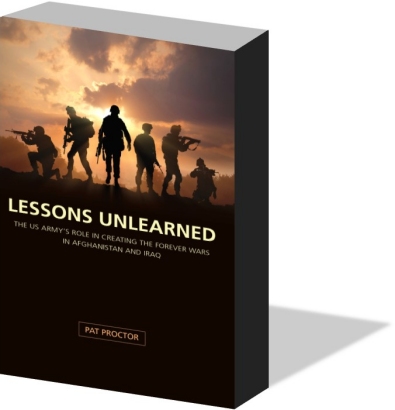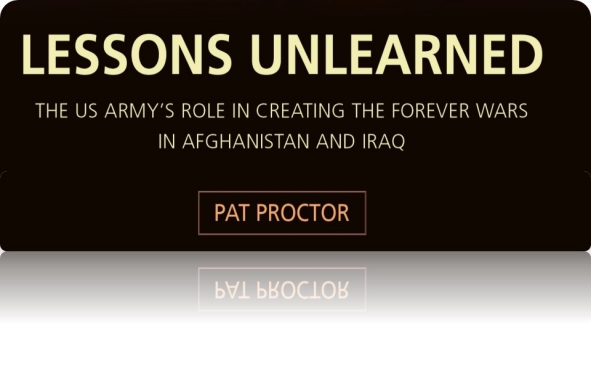From the end of the Cold War to the beginning of the
war in Iraq, the U.S. Army marched relentlessly toward ever greater
capacity to fight a peer competitor in a high-intensity conflict despite
the ever-growing body of evidence that it would almost certainly not
have to fight this kind of war again. The United States was dealt a
humiliating defeat by militias in Somalia, yet the U.S. Army refused to
change. A U.S. military intervention in Haiti failed to produce
political change on the ground, but rather than reflecting on this
failure, the U.S. Army dumped the conflict on the United Nations and
went home. The Army’s inability to forge a political settlement in
Bosnia and Kosovo trapped the United States in a decades-long quagmire,
but Army leaders refused to institutionalize the lessons of these
conflicts. A growing chorus of observers, inside and outside of the
Army, warned that these low-intensity conflicts were the new face of
warfare in the twenty-first century, but the U.S. Army’s senior
leaders—steeped in a culture that emphasized preparation to fight
high-intensity conflicts over all other activities—continued to develop
expensive, high-tech weapons to fight a third world war.
Thus, when the twin towers fell on 11 September 2001, the stage was set
for a slow-motion military disaster. The U.S. Army that invaded
Afghanistan in October 2001 and Iraq in March 2003 was ill-prepared for
the character of warfare that it ultimately faced.
Lessons Unlearned examines why senior Army leaders ignored the
arguments that low-intensity conflict observers were making and how they
kept the Army from building its capacity to engage in low-intensity
conflicts. However, this book is not intended merely as a simple history
or as an exercise in blame-laying for past sins. It is an intervention;
the U.S. Army is in the process of making the same mistake
again—intentionally forgetting the hard-fought lessons of Afghanistan
and Iraq. By understanding why and how the Army of the 1990s refused to
prepare to fight low-intensity conflicts on the eve of the war on
terror, it might be possible to prevent the U.S. Army of today from
drifting toward a similar disaster.
About the Author
Colonel (ret.) Pat Proctor, PhD. is an assistant professor in the
homeland security program at Wichita State University. Colonel (ret.)
Proctor is a U.S. Army veteran of both the Iraq and the Afghanistan wars
with over 25 years of service in command and staff positions from Fort
Hood, Texas to Schofield Barracks, Hawaii. He most recently deployed to
Jordan, on the front lines of the war on ISIS, as the commander of the
Gunner Battalion (4th Battalion, 1st Field Artillery). In 2012, Pat
served as the Chief of Plans for Regional Command-East in Afghanistan,
planning the transition of the war to Afghan security forces ahead of
the withdrawal of American forces from Afghanistan. In 2009, Pat
deployed to Iraq as operations officer for Task Force Patriot (2nd
Battalion, 32nd Field Artillery), an artillery-turned-infantry battalion
battling insurgents in Saddam Hussein’s hometown of Tikrit. In 2007, Pat
was drafted to work in Iraq as part of a handpicked, 20-man team of
soldiers, scholars, and diplomats led by Col. H.R. McMaster and
commissioned by General Petraeus and Ambassador Crocker to create a new
strategy for the war in Iraq. Pat worked with a State Department
counterpart to write the strategic communication plan for what has since
become known as the Iraq “surge.”
Colonel (ret.) Proctor holds a doctorate in history from Kansas
State University. He also holds a masters in strategic studies
from the U.S. Army War College and masters of military arts and
sciences for strategy and theater operations from the US Command and
General Staff College and the School of Advanced Military Studies,
respectively.
Pat is the author of
Containment and Credibility (Carrel Press, 2015), about the
domestic politics of the Vietnam War, and
Task Force Patriot and
the End of Combat Operations in Iraq (Government Institutes
Press, 2011), an account of his deployment to Iraq from 2009 to 2010. Other recent publications include “Message versus Perception during
the Americanization of the Vietnam War” (The Historian, Spring 2011),
“Fighting to Understand: A Practical Example of Design at the Battalion
Level” (Military Review, March-April 2011), and “The Mythical Shi’a
Crescent” (Parameters, Spring 2008 and
Iran International Times, 23 May
2008).
To learn more about Pat Proctor and his other works,
click here. |

|

